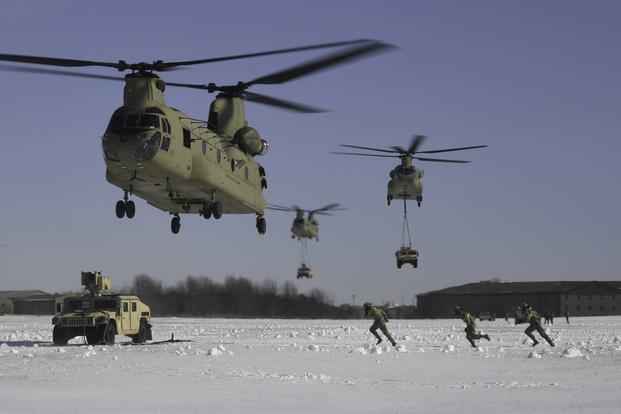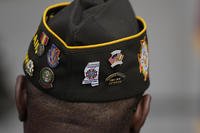U.S. Army aviation officials have launched an effort to restore full air assault capability to the 101st Airborne Division -- a capability the Screaming Eagles have been without since 2015.
As the Army's only air-assault division, the 101st has traditionally had two combat aviation brigades -- instead of one CAB like other divisions -- to allow the unit to lift a full brigade combat team into combat at one time.
But mandatory budget cuts under sequestration prompted the Army to take one of the 101st's CABs away.
The effort to re-equip the 101st with dozens of helicopters is one of the top aviation priorities the Army has identified as it races to be ready to conduct major combat operations across all warfare domains by 2028, Maj. Gen. David Francis, commander of the Army's Aviation Center of Excellence at Fort Rucker, Alabama, said.
Related: Why This City Adopted the 101st Airborne Screaming Eagles During Vietnam
"Army aviation was required to reduce the number of combat aviation brigades in the active component, so we went from 13 combat aviation brigades down to 11," Francis said Wednesday at the 2019 Association of the United States Army's annual meeting.
"One of the combat aviation brigades that was inactivated was the 159th CAB, one of two that resided [in the 101st] at Fort Campbell."
The 159th CAB officially inactivated in December 2015, leaving the unit with the 101st CAB.
"The capacity that we lost was primarily on the lift side, so we are going to build additional lift capability into the 101st to enable that capability to reside back in that organization," Francis said.
The effort involves equipping the 101st with an additional 36 CH-47 Chinook helicopters, which will give the unit a total of 48 of the heavy-lift helicopters, said Francis, who added that the effort will start by adding a company of 12 Chinooks.
While the effort has already begun, it's still uncertain how long it will take to add 36 to the 101st, he said.
"We want to get it certainly by 2028, but it will depend on when ... we make organization changes that have not yet been decided by the Army," Francis said.
-- Matthew Cox can be reached at matthew.cox@military.com.
Read more: At 98, D-Day Vet Jumps Again, with Eyes on the Big 100













